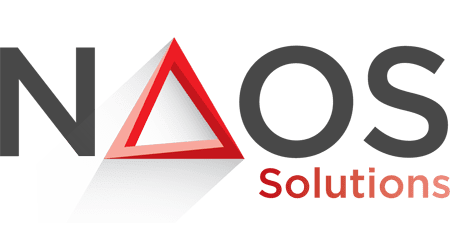Are your customer service costs eating into your profits? You’re not alone. Many businesses outsource customer service to external call centers to reduce costs.
Companies can save over 55% on costs by outsourcing call center services. With Egypt’s call center industry growing at a 5% rate every year, this is the perfect opportunity to save considerable money.

Is outsourcing the silver bullet? Before you invest, let’s weigh the benefits and downsides of outsourcing your customer service burdens.
UNDERSTANDING THE CHALLENGES OF OUTSOURCED CALL CENTERS
An outsourced call center may seem like a foolproof solution, but it has its fair share of challenges. Before investing in such a service, ensure your business is ready to face the following hurdles.
Communication Barriers
First and foremost, outsourcing customer service can create communication barriers, particularly due to language differences.
Research found that approximately 75% of consumers who speak a language other than English prefer to work with customer service reps who speak their language. Most importantly, the call center agency should be fluent in English.
Otherwise, it will lead to frustration and misunderstanding. This is still relevant if your outsourcing team is fluent in English but not local to the business’ country. The differences in accents, vocabulary, and fluency affect the conversation more than you think.
Additionally, different time zones can create communication barriers. 51% of people believe a business needs to be available 24/7 to meet their expectations. Differences in time zones can affect your customer service team’s always-on approach.
Sure, they may be available to answer calls round-the-clock, but can you say the same for other teams in your business? How would the outsourced call center team contact your sales team to help resolve urgent support outside their working hours?
Cultural Differences
Of course, cultural differences can also impact how customers receive their service. Cultures vary widely in their expectations and norms for customer service.

For instance, research shows that American customers are willing to share their opinions and provide feedback, positive or negative. In addition, they are very likely to spread negative word-of-mouth about their experience (13% will tell at least 15 people).
Meanwhile, in broad outline, the European feedback culture varies drastically from that of the US. European customers tend not to share positive feedback; they only share negative feedback. On the contrary, Canadian customers tend to avoid leaving negative reviews.
Egyptian customers tend to express their dissatisfaction or frustration openly and expect an immediate resolution to their concerns.
Misunderstanding these nuances can create negative experiences and unhappy customers. However, you can train your outsourced call center team to understand your customers’ communication styles, expectations, and unspoken social cues.
Partnering with the right Customer Service Provider ensures that your brand’s tone of voice remains consistent across all channels.
Quality Control
Without ongoing supervision from your company, quality control issues are likely to arise in your outsourced call center team. It’s hard to ensure their services meet your company’s standards when the team isn’t available in-house.

Changing customer service tone and approach may confuse long-time callers, leading to lower Customer Satisfaction (CSAT) scores and First-Call Resolution (FCR) rates.
The solution? Maintain efficient communication between your in-house and outsourced teams to ensure continuous monitoring. This will include call recordings, customer surveys, and regular performance reviews with the outsourced provider.
EXPLORING THE STRATEGIC ADVANTAGES OF OUTSOURCED CALL CENTERS
The strategic advantages of outsourced call centers continue to evolve as the industry transforms. While cost savings, scalability, and specialized skills remain essential, leading customer service companies are preparing for 2026 by focusing on next-generation advantages: hybrid AI-human collaboration, agentic automation, distributed workforce excellence, and proactive innovation partnerships that create competitive differentiation rather than just operational efficiency.
Of course, we wouldn’t recommend outsourced call center services if it weren’t a great business opportunity. They can come with tons of strategic advantages, including:
Cost Savings
Labor costs account for most of call center expenses, but outsourcing to lower-wage regions can deliver significant cost reductions. Outsourced call center services can help cut customer service expenses by 50%.
First, let’s look at what an average in-house customer service team costs in the US:
- Customer Service Representative (CSR): $40,000 per year
- Customer Service Team Leader: $72,500 per year
- Customer Service Manager: $100,400 per year
Since you’ll need multiple customer service reps, this can add up to 1–2% of the total revenue for most businesses. Meanwhile, outsourced call center providers like NAOS Solutions offer complete, expert teams at a fraction of this cost.
Plus, you’ll save money on rent, equipment, software licenses, and utilities without an in-house call center team to pay for. This way, you can reallocate your financial resources to more critical initiatives.
Scalability
Outsourced call centers have a readily available talent pool. This allows businesses to quickly scale up during peak seasons without disrupting their hiring and training.

Dealing with more calls than usual during a viral campaign? The outsourced call center provider will quickly scale their services without any worry on your end.
It goes the other way around, too. If demand decreases, they can scale down operations just as quickly—gone are the days of wasting money on unused labor capacity and infrastructure.
Plus, outsourcing enables 24/7 staffing as you expand your business globally. Your internal customers will enjoy round-the-clock support without you needing to manage a shift-based in-house team.
Access to Specialized Skills
Outsourcing gives you a global talent advantage. You’ll be able to tap into specialized agents – the kind you might struggle to find or train in-house – who understand the nitty-gritty of your industry, whether it’s healthcare, finance, or tech.
This means your customers won’t have to deal with generic support – they’ll get the tailored expertise they deserve.
For instance, if you’re running a healthcare business, your outsourced team will have experienced callers who can answer medical questions on the spot. Outsourced teams also include financial specialists to handle complex transactions.
BEST PRACTICES FOR MANAGING YOUR OUTSOURCED CALL CENTER
So, now that you’ve weighed the pros and cons, you can decide whether an outsourced call center solution is the right choice for your business. If yes, remember these tips and practices to ensure your outsourced team meets your company standards.

Common Outsourcing Mistakes and How to Avoid Them
Certain pitfalls can significantly undermine the effectiveness of your customer service when outsourcing call center operations. Understanding these common mistakes can help you craft a more successful outsourcing strategy.
- Ambiguous Requirements
The foundation of a strong outsourcing partnership lies in a clear and detailed project scope. Avoid general statements like “enhance customer satisfaction” without specifying measurable targets (e.g., increase customer satisfaction scores by 10%). Clear, quantifiable expectations prevent misinterpretation and ensure both parties are aligned.
- Inadequate Technical Specifications
Ensure that all technical requirements are explicitly stated. This includes specifying hardware setups, software compatibility, and network bandwidth requirements. Precise technical details prevent operational hiccups and ensure the outsourced team is fully equipped to integrate with your existing infrastructure.
- Vague Process Definitions
Documenting detailed procedures guides the outsourced team’s daily operations, ensuring consistency in customer interactions. Specify each step of customer engagement processes to minimize discretion and variability in service delivery.
By proactively addressing these areas, you can mitigate risks and enhance the efficiency and quality of your outsourced call center services, fostering a relationship that brings sustained value to your business.
Establishing Effective Communication Protocols
The only way to ensure your outsourced team meets your standards is by staying in contact. Here are a few tips for establishing effective communication protocols:
- Clarity is King: Define your expectations from the get-go. How often do you want to communicate? What are your preferred channels? What escalation procedures do you have in place for urgent issues?
- The Right Tools: Invest in, or ensure the outsourced team has access to, collaborative tools to bridge communication gaps and keep everyone on the same page. These could include
- Project management tools (e.g., Asana or Trello for real-time task tracking and progress updates)
- Shared knowledge base (i.e., a central library for scripts, FAQs, product information, and company policies)
- Co-browsing and screen-sharing tools
- Designated Point of Contact: Establish a single point of contact for both your team and the outsourced provider. That may be your customer service manager, technical lead, or training specialist – having multiple contact points is possible. This is the simplest way to streamline communication and avoid confusion.

- Detailed escalation procedures: Ensure that all service requests, especially those that cannot be resolved initially, are systematically escalated to higher expertise or authority levels, ensuring timely and effective resolution.
A well-defined escalation process specifies which issues require escalation, to whom they are escalated, and the expected resolution timelines. By clearly documenting these procedures, both the outsourced and the in-house teams can maintain a consistent understanding and approach, reducing response times and improving customer experience.
Cultural Integration Workshops
Cultural and linguistic differences are the first barrier you must overcome when outsourcing your call center responsibilities. If you want an effective partnership, your outsourced team must deeply understand cultural nuances. To make sure they meet your company’s standards of cultural integration, you can conduct regular workshops focusing on:
- Communication Styles: Discuss differences in directness, formality, and conflict resolution approaches. For instance, how would you expect them to respond to a particularly direct or assertive client?
- Customer Expectations: Explore how service expectations might differ between your customer base and your outsourced team’s location.
- Building Rapport: Encourage activities that allow your outsourced and in-house teams to get to know each other personally.
Most importantly, don’t forget to invest time and resources in sensitivity training. This is your opportunity to address potential biases or stereotypes on both sides head-on. With open dialogue, you can create a respectful and inclusive work environment.
Regular Performance Tracking
Lastly, remember to keep tracking your outsourced team’s performance. To get a return on your investment, the outsourced team must meet certain KPIs that align with your business goals, which may include:
- First Call/Contact Resolution (FCR)
- Average Handling Time (AHT)
- Customer Satisfaction (CSAT)
- Quality Assurance (QA) scores
Don’t just track metrics – analyze them with the outsourced provider’s help to pinpoint improvement areas. Then, schedule regular performance reviews to provide constructive feedback as needed.
CONCLUSION
Outsourced call center solutions present both challenges and opportunities.
The key takeaway? Strike a perfect balance. Don’t treat outsourcing as simply offshoring work; treat it as an opportunity to upgrade your customer service operations.
Ready to see how outsourcing can completely transform your customer experience? Our experts at NAOS CX are here to guide you. Contact us today, and let us offer a solution that will leave your customers happy and your bottom line healthier.

